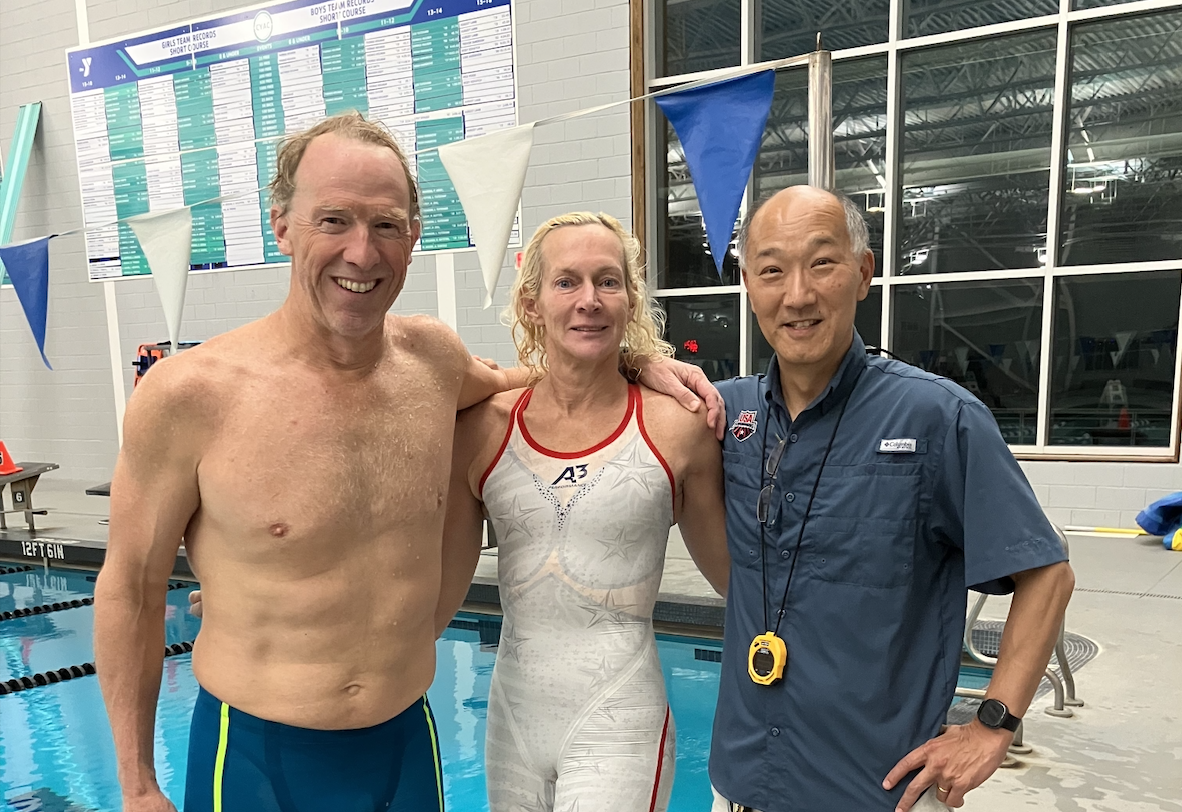
Fred Schuster
Masters Swimmer
How data-driven technique analysis helped Fred break through his training plateau and transform his swimming efficiency after decades of "just grinding yards"
About Fred
Fred swam for Indiana University in the early 1980s, and like many Masters swimmers, has spent the last few decades training mostly on his own. His approach? Grind out the yards. No frills. No fluff. Just work.
But last year, after hitting 6,000 yards per day in training, Fred realized he quite literally couldn't do more yards to get better.
"The only path I saw to get better was just doing more. But I was hitting a wall— there were no more yards to do."
That's when he came to Velocity Swim Labs.
Fred brought power, discipline, and commitment—but as our analysis would reveal, his stroke wasn't maximizing that effort. Despite his dedication and decades of experience, there were fundamental technique issues holding him back that he couldn't identify on his own.
What We Found
Our comprehensive analysis of Fred's swimming revealed several critical issues that were limiting his performance:
1. Asymmetrical Freestyle Pull
On freestyle, our force paddles showed his left arm pull was driving water down, not back—robbing him of propulsion, and wasting the first third of his stroke. While his right arm was generating up to 53% in propulsion, his left hand was lingering at just 38% percent propulsion. What was his left arm doing? Generating 51.2% in downward force!

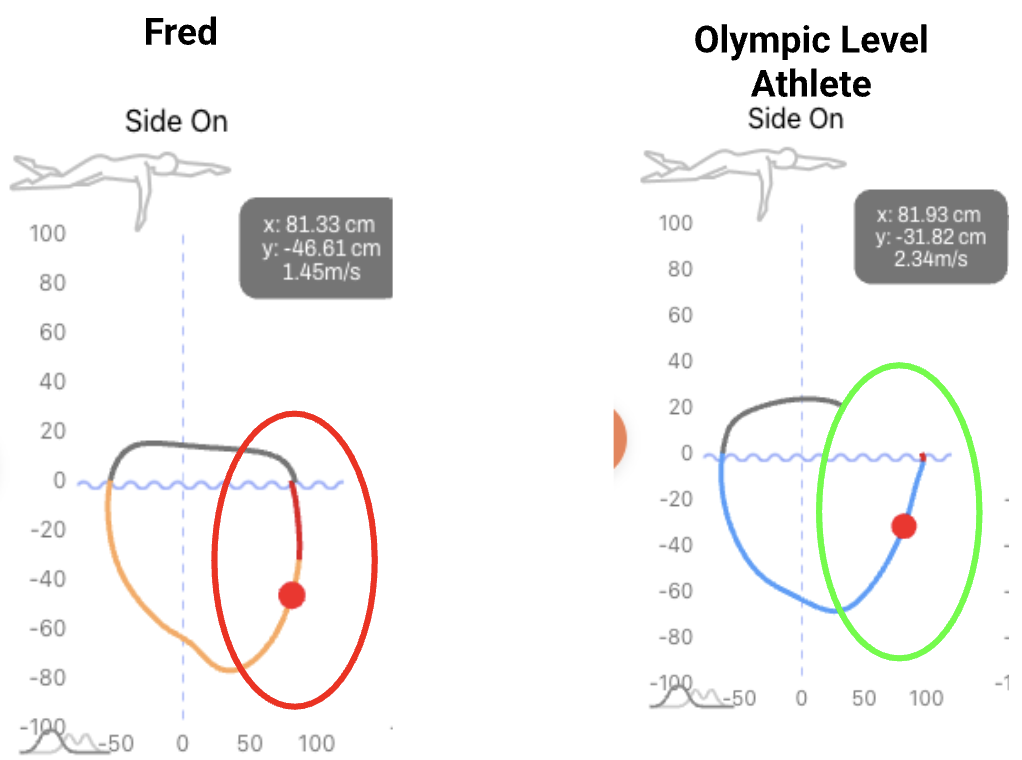
2. Imbalanced Body Rotation
Our accelerometers caught that Fred was rotating just 40% as aggressively to his left side as his right side, making a strong catch nearly impossible on his left side. This asymmetry was creating significant inefficiency in his stroke.
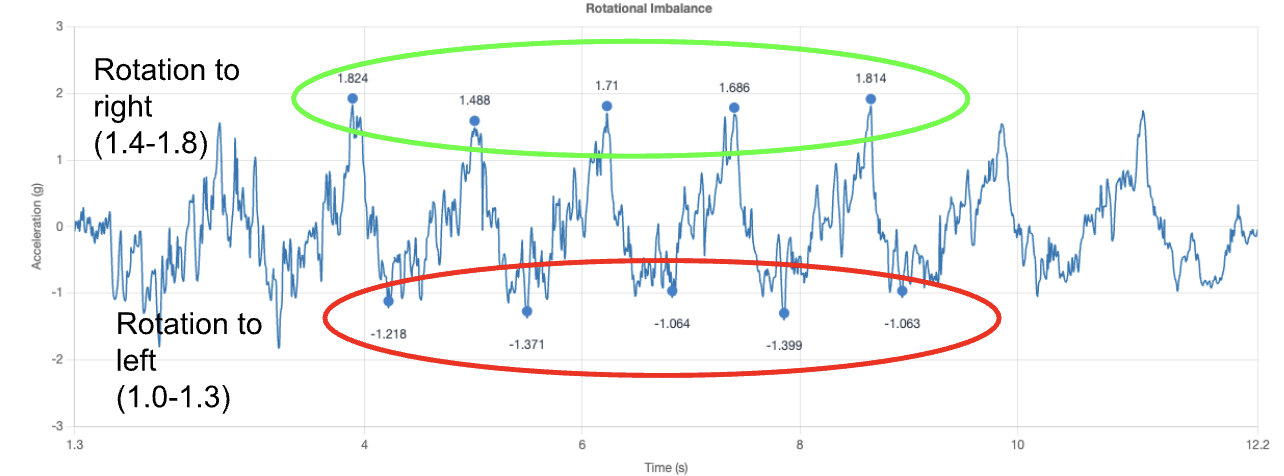
3. Inefficient Butterfly Catch
On butterfly, Fred was doing something similar to his freestyle, burning the first third of his stroke to push down instead of pull back. When compared in slow motion to an elite butterflier with our camera system, the difference was clear.
4. Speed Loss on Pushoffs
Most critically, Fred was burning speed on every single pushoff! Our accelerometers showed that Fred managed to decelerate 3Gs in just 3 tenths of a second. These pushoffs and breakouts created drag exactly when he should have been accelerating.
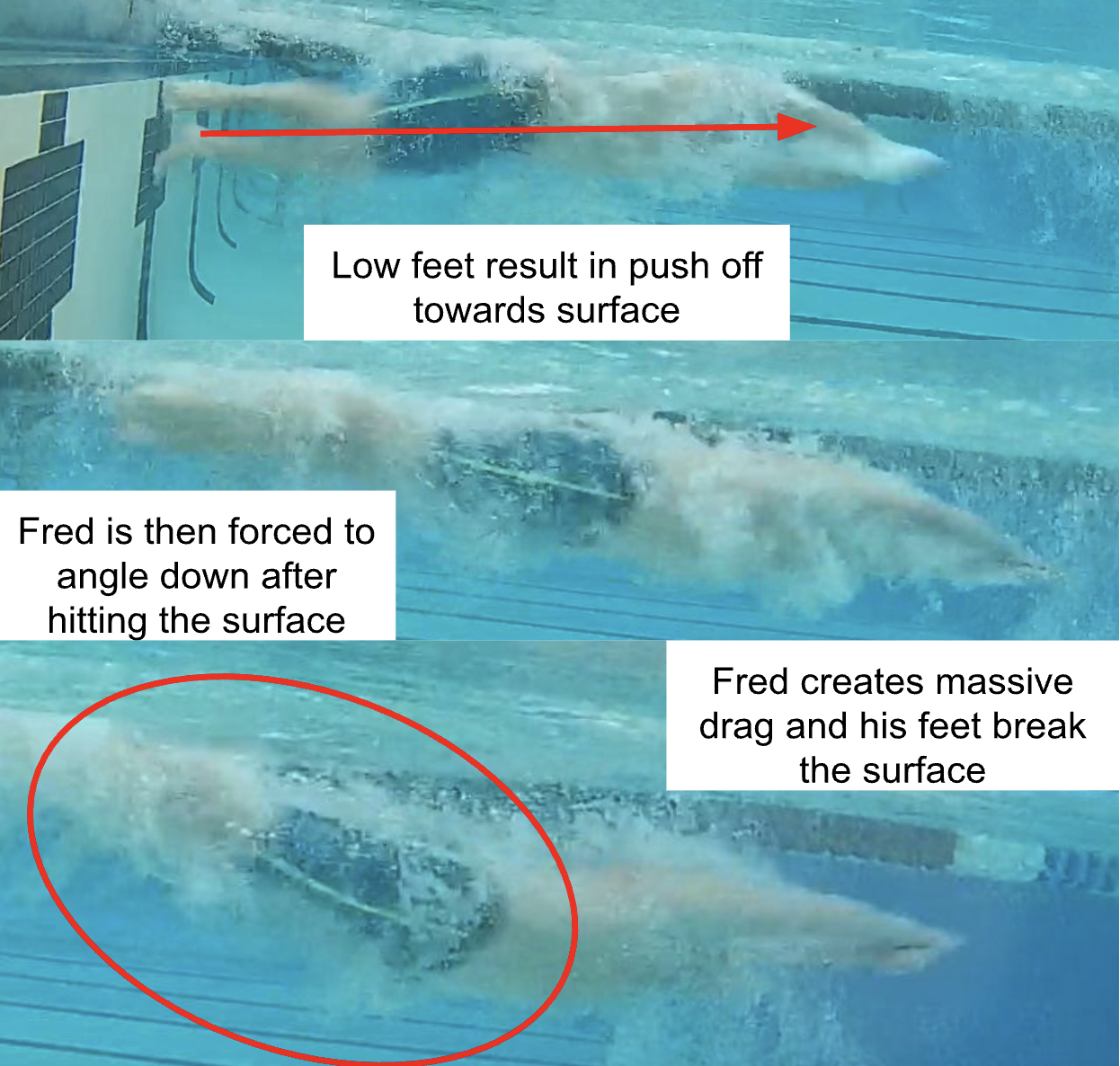
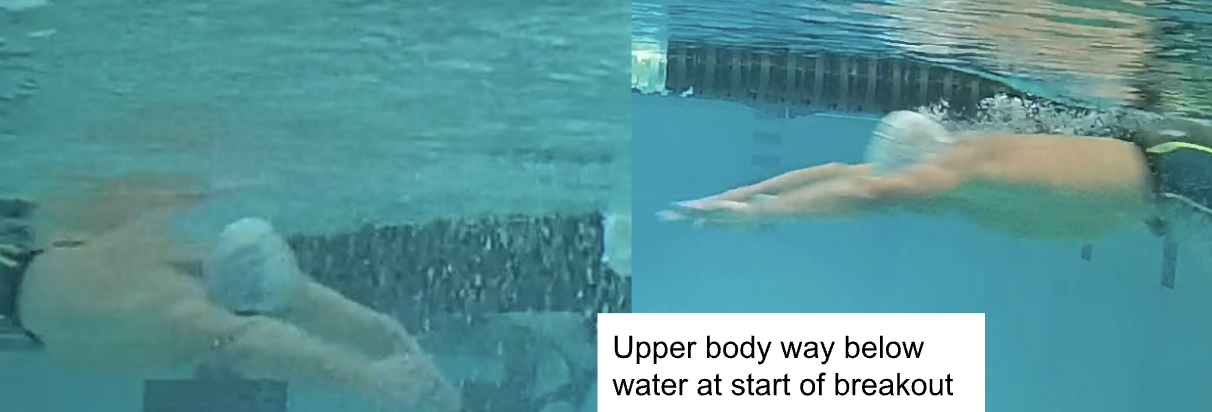
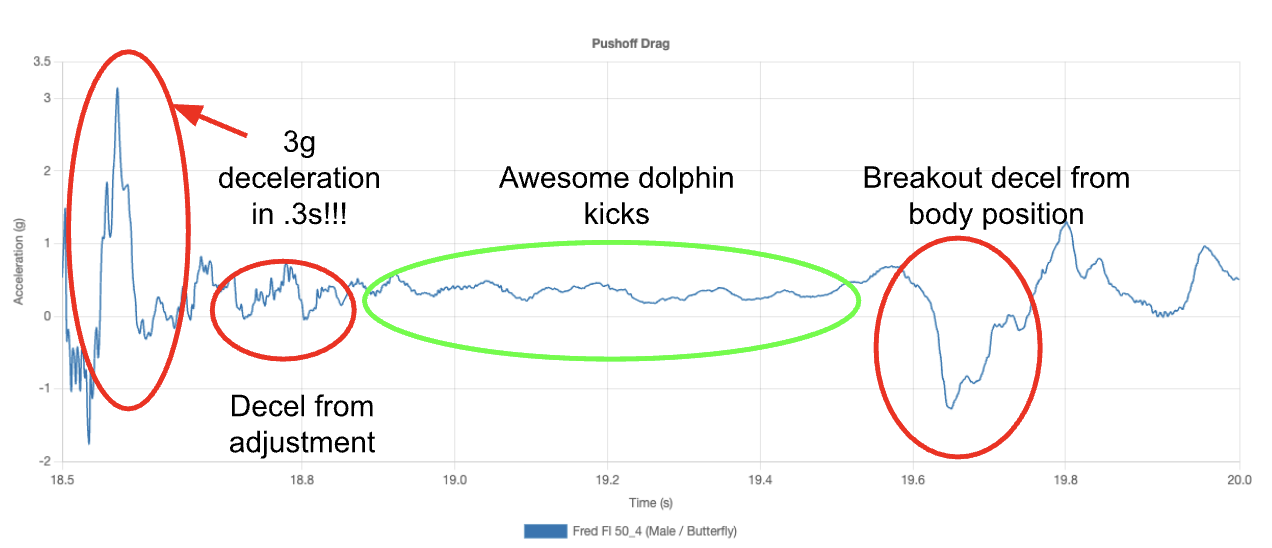
5. Underutilized Dolphin Kick
On the bright side, despite Fred thinking he was an "unworthy dolphin kicker," our internal comparisons and accelerometer data actually found his dolphin kicks to be elite, accelerating him far more than he thought!
What Changed
With a full report and side-by-side visuals, Fred saw not just what needed fixing—but why it mattered. The report he received didn't just tell him what was going wrong, it told him why it was happening and how he could fix it.
Based on our findings, we developed a targeted improvement plan for Fred that included:
1. Freestyle Pull Correction
We implemented targeted drills for catch mechanics and shoulder rotation to develop feel, strength, and comfort with a more aggressive left hand catch. This helped Fred balance his propulsive force between both arms and eliminate wasted downward motion.
2. Butterfly Catch Progression
A series of progression drills helped Fred learn how to have a more aggressive butterfly catch, transforming the initial phase of his stroke from downward pressure to effective forward propulsion.
3. Turn and Pushoff Optimization
We provided specific in and out of water strengthening exercises to help Fred turn more aggressively and get a more efficient pushoff. This was complemented by breakout-specific technique work to clean up drag-heavy moments and mini sets to practice the progression on his turns.
4. Enhanced Dolphin Kick Strategy
After discovering his dolphin kicks were elite, we encouraged Fred to add one more dolphin kick off walls to maximize this strength and gain more distance before surfacing.
5. Training Philosophy Shift
Perhaps most importantly, Fred experienced a mindset shift from "just more yards" to intentional, focused training with a heavy diet of drills, equipment usage, and stroke partials + progressions.
"Now, every time I swim, I'm thinking about what I saw in the report. That's what's driving me—not just getting through the set."
The Results
- In just two weeks, Fred has improved his left arm propulsive efficiency from 38% to 52%, and his overall freestyle propulsion increased from 40-45% to 50-55%
- His butterfly has increased its propulsive force to above 50%
- His pushoffs now maintain speed rather than losing it
- His training has become more focused and efficient
- Fred will be racing throughout this summer, including at Masters Worlds in Singapore!
Hear From Fred
"When someone tells you to 'put your hand over the barrel,' that's all well and good. But when they back that up with hard data—or when you literally see yourself going from huge acceleration [3g] to 0 in a second—that's a whole different thing. You see the opportunity. You see how bad it is. And now you want to fix it... and then they show you how to fix it with drills, videos, and exercises!"
"The breakdown was accessible. The report had everything—video, side-by-side comparisons, images, charts. It wasn't just feedback. It was real insight. Plus, they translated the data from numbers to drills and action I can actually take without just overwhelming me."
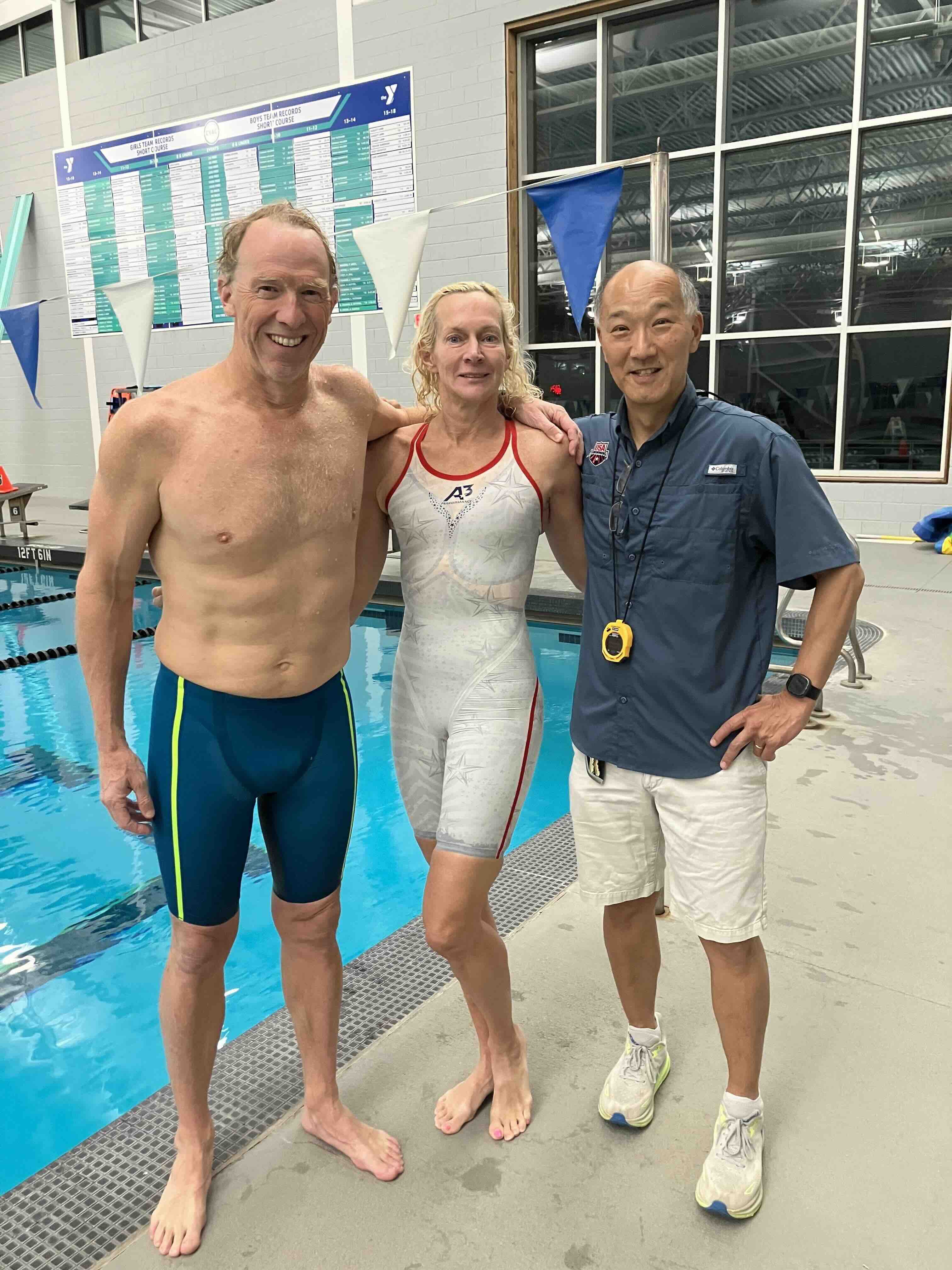
Fred Schuster
Masters Swimmer, Former Indiana University Swimmer